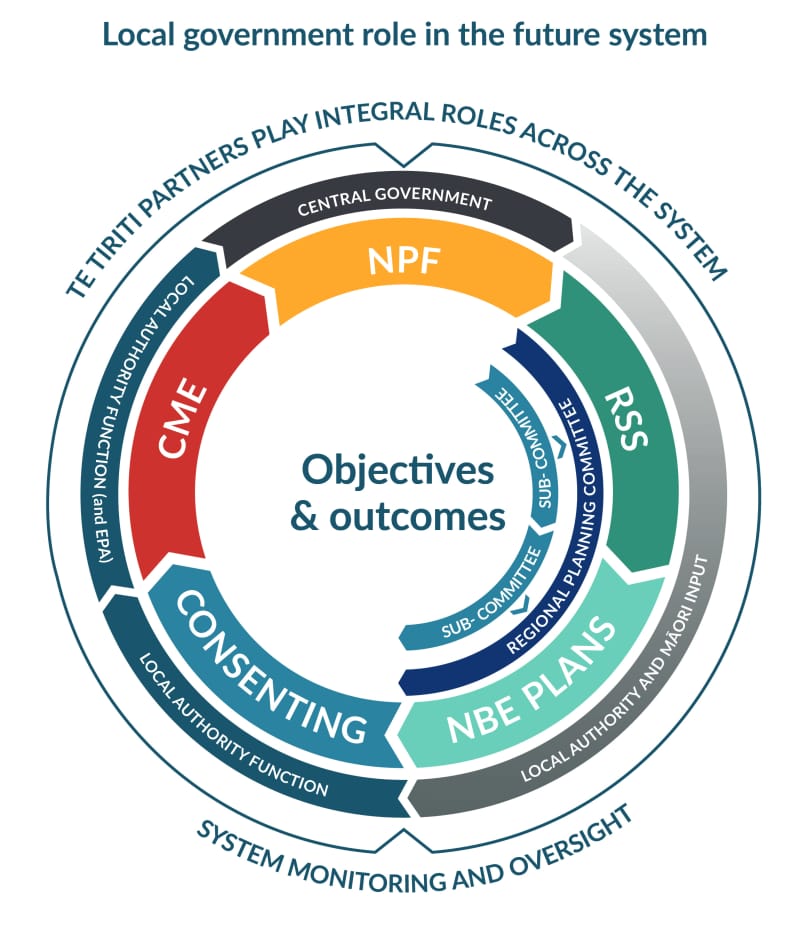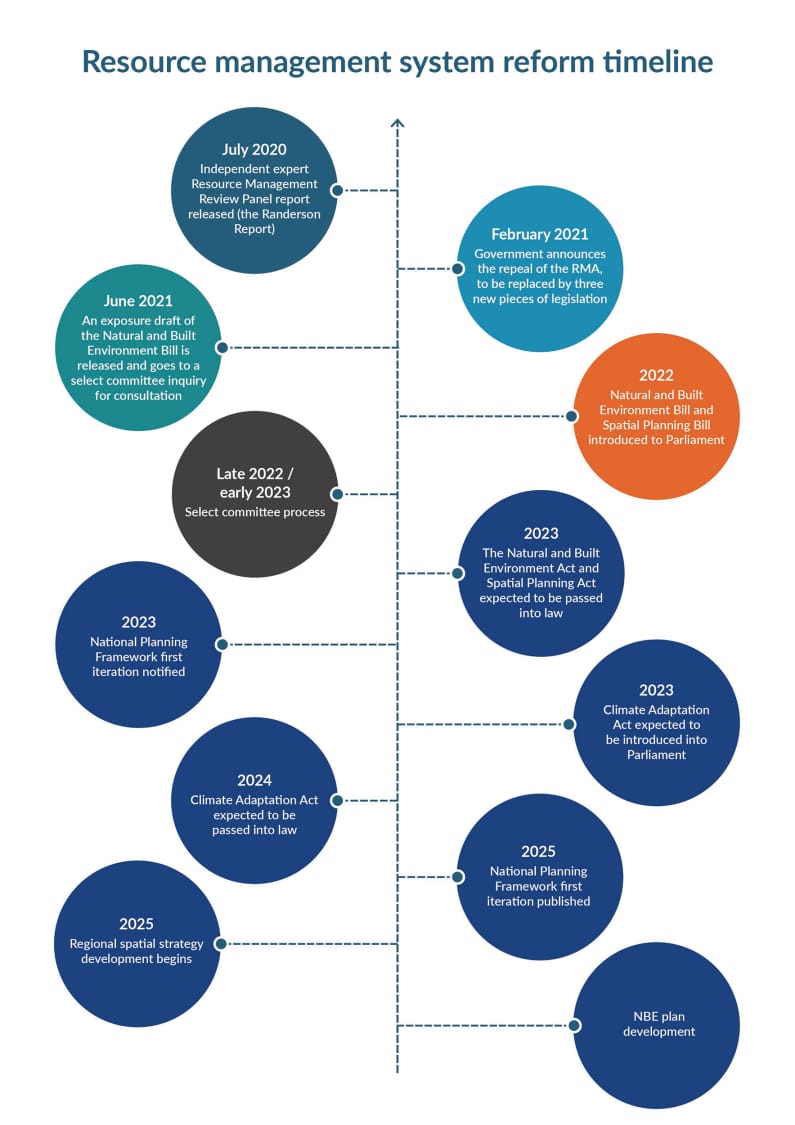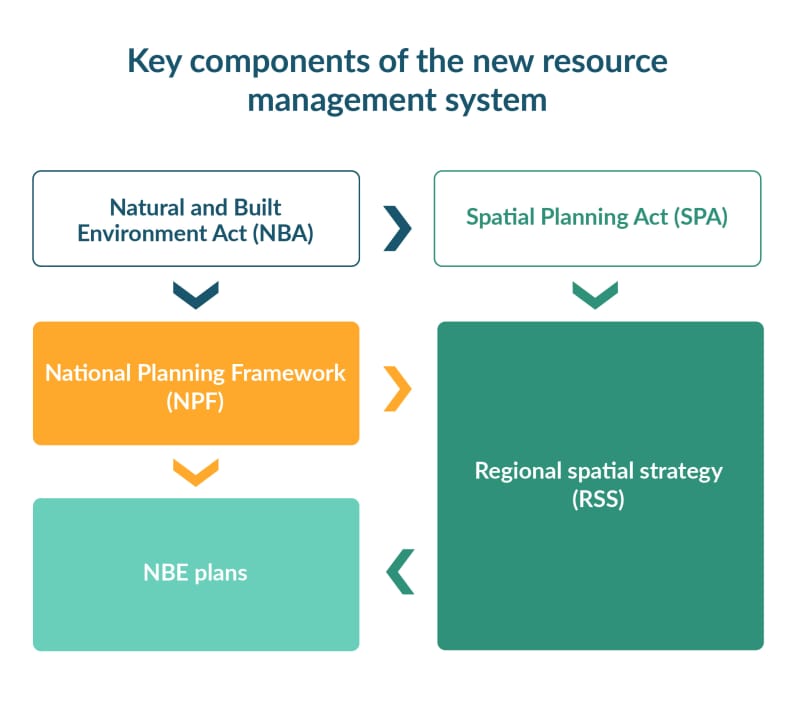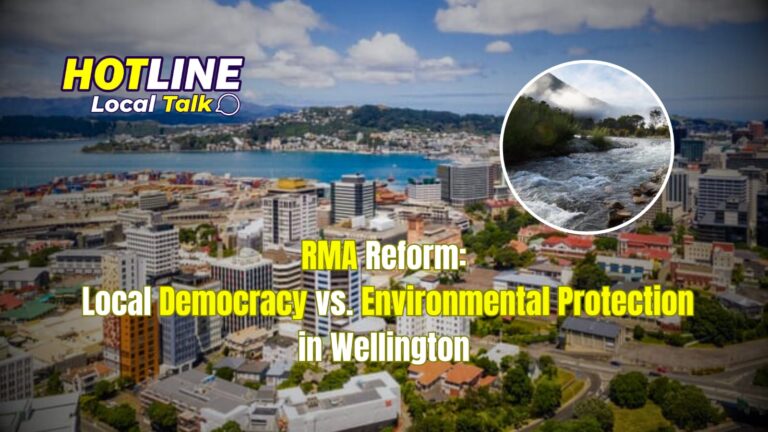The recent overhaul of New Zealand’s Resource Management Act (RMA) has ignited robust debates, especially in Wellington. These changes, driven by the Natural and Built Environment Act (NBA) and the Spatial Planning Act (SPA), aim to streamline development processes and improve environmental outcomes. However, many local leaders are concerned about how these reforms will impact regional development, housing, and environmental preservation.
Picture Source: environment.govt.nz
Understanding the RMA Reforms
The RMA, introduced in 1991, has long been criticised for being overly complex, slowing down housing developments, and increasing project costs. The government’s new reforms claim to address these issues by simplifying the consenting process and boosting housing supply. The NBA and SPA, introduced in 2023, promise to replace the RMA gradually across regions, focusing on integrating land-use planning with long-term environmental goals.
Picture Source: environment.govt.nz
But what does this mean for Wellington? While some sectors welcome the reduced red tape, others fear the changes could compromise environmental protection and local democracy. For example, Wellington Mayor Tory Whanau has expressed concerns that local councils may lose autonomy over key decisions about urban planning and environmental regulations. This is particularly significant for a region known for its delicate ecosystems and unique urban-rural balance.
The Housing Challenge
One of the key drivers behind the RMA reforms is housing affordability. As of mid-2023, Wellington faced an average house price of $875,000, and rents have risen by over 30% in the last five years. With housing in high demand, the government hopes that the reforms will expedite the construction of new homes. Under the new system, fast-track consent processes are expected to make it easier to develop urban areas, but critics argue that this could lead to poor environmental outcomes if not carefully managed.
Picture Source: insidegovernment.co.nz
Professor John Tookey from Auckland University of Technology has pointed out that while fast-tracking consents may speed up developments, the success of the reforms will depend on how councils manage infrastructure such as water, roads, and public transport. Without careful planning, Wellington could face infrastructure bottlenecks that hinder both environmental and social progress.
Local Democracy Under Threat?
Wellington’s leaders have voiced concerns over the diminishing role of local councils in environmental and urban planning. The new framework emphasises “spatial planning,” which seeks to integrate regional and national priorities. This could mean that certain local decisions are overridden by broader national directives.
Picture Source: environment.govt.nz
For instance, the NBA replaces the RMA’s focus on sustainable management with the principle of Te Oranga o te Taiao, reflecting the need to respect environmental well-being. While this is a positive step for Māori environmental leadership, the concern remains whether local councils will be able to enforce strict environmental safeguards without the same autonomy.
Professor Iain White from the University of Waikato suggests that while these reforms have the potential to unify planning processes, they risk sidelining local voices. Planning outcomes, particularly in contested urban spaces like Wellington, are political by nature. Ensuring that regional plans reflect local values, rather than solely national goals, will be crucial for long-term success.
Environmental Impact: Balancing Development with Preservation
Wellington is known for its commitment to sustainability, and many worry that these reforms could weaken environmental protections. The fast-track consenting process, while beneficial for development, may lead to significant ecological risks. One key concern is how the reforms will handle Te Mana o te Wai, a principle that gives priority to the health of freshwater bodies. Under the old RMA, councils had strict guidelines for protecting freshwater ecosystems, but these safeguards could be relaxed under the new regime.
Picture Source: forestandbird.org.nz
In fact, the National Policy Statement for Freshwater Management, which is linked to the RMA, may undergo changes that could weaken protections for Wellington’s waterways. The government has already signalled its intention to provide councils with more flexibility in meeting environmental limits. Environmental groups argue this could lead to degradation of natural assets, particularly in regions like Kāpiti and Hutt Valley, where waterways are already under pressure.
A Future of Compromise?
As Wellington grapples with these sweeping changes, local democracy and environmental stewardship will continue to be hotly debated. The question remains whether the new NBA and SPA can successfully balance the need for urban development with the urgent demand for environmental preservation. For Wellingtonians, the stakes are high—both in terms of housing affordability and the region’s natural heritage.
TRUTH SEEKER
Instantly run a Quiz with friends... about the article. Interact more & analise the story. Dig in, catch out biased opinions, and "fact check" with TRUTH SEEKER by ONENETWORK WELLINGTONLIVE 👋
Do you agree with the main argument of this article?
Total votes: 0
What is the name of the act that is driving the recent overhaul of New Zealand's Resource Management Act (RMA)?
Bias Analysis
Fact Check Summary
True. The article mentions that the changes aim to streamline development processes and improve environmental outcomes.
Source: Article content
True. The article states that Wellington faced an average house price of $875,000 as of mid-2023.
Source: Article content






